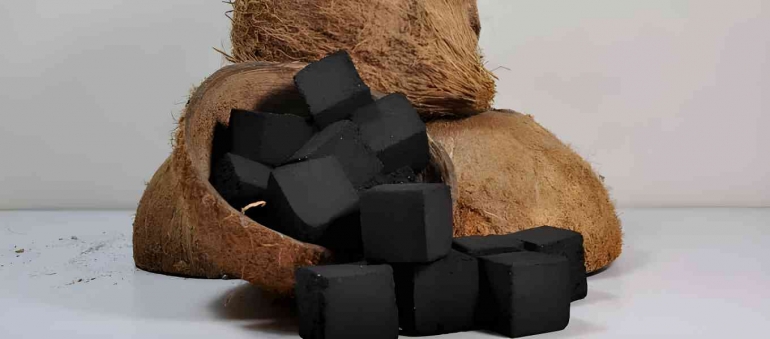
In the face of climate change and environmental degradation, finding sustainable solutions to reduce carbon emissions is crucial. One such solution gaining traction is the use of briquettes as an alternative fuel source.
Briquettes, made from biomass such as agricultural waste or wood residues, offer a promising avenue for reducing carbon emissions while promoting sustainable development.
This article delves into the benefits of using briquettes and their role in carbon emission reduction efforts.
Carbon emissions, primarily in the form of carbon dioxide (CO2), result from various human activities such as burning fossil fuels for energy, industrial processes, deforestation, and agricultural practices.
These emissions contribute significantly to the greenhouse effect, leading to global warming and climate change. Finding ways to mitigate carbon emissions is vital to limit the adverse impacts of climate change.
Briquettes serve as an environmentally friendly alternative to traditional fuels like coal and wood. They are typically made from biomass residues such as sawdust, agricultural waste, or even municipal solid waste.
The process of briquette production involves compressing these raw materials under high pressure without the use of any binding agents.
Briquettes Offer Several Advantages in Terms of Carbon Emission Reduction
1. Utilization of Biomass Residues:
Briquette production utilizes biomass residues that would otherwise decompose and emit methane—a potent greenhouse gas—into the atmosphere.
By converting these residues into briquettes, carbon stored within the biomass is effectively sequestered, reducing net carbon emissions.
2. Renewable and Sustainable:
Unlike fossil fuels, biomass used in briquette production is renewable and readily available.
This promotes sustainable land management practices and reduces dependence on finite fossil fuel resources, thus mitigating carbon emissions associated with their extraction and combustion.
3. Lower Carbon Intensity:
Briquettes typically have lower carbon intensity compared to traditional fuels like coal. Their combustion releases fewer greenhouse gases per unit of energy produced, making them a cleaner and more environmentally friendly option for heat and power generation.
4. Reduced Deforestation:
The widespread use of briquettes can help alleviate pressure on forests by providing an alternative fuel source.
Deforestation, often driven by the demand for firewood and charcoal, contributes significantly to carbon emissions and loss of biodiversity.
By promoting the use of briquettes, deforestation rates can be curbed, thereby preserving vital carbon sinks and ecosystem services.
Impact on Carbon Emission Reduction
The adoption of briquettes as a substitute for conventional fuels can have a substantial impact on carbon emission reduction at both local and global levels. Several factors contribute to this:
1. Substitution Effect:
By replacing coal, charcoal, or wood with briquettes for heating, cooking, and industrial processes, the emission of greenhouse gases associated with traditional fuel combustion is significantly reduced.
This substitution effect directly contributes to lowering carbon emissions and mitigating climate change.
2. Carbon Sequestration:
The biomass used in briquette production acts as a carbon sink, sequestering carbon from the atmosphere during the growth phase of plants.
When converted into briquettes, this carbon remains locked within the briquette matrix, effectively reducing net carbon emissions compared to allowing biomass residues to decompose naturally.
3. Sustainable Development:
The widespread adoption of briquettes fosters sustainable development by promoting environmental conservation, economic growth, and social equity.
By generating income opportunities for rural communities involved in biomass collection and briquette production, it addresses poverty alleviation while simultaneously reducing carbon emissions.
Case Studies and Success Stories
Numerous case studies and success stories around the world demonstrate the efficacy of briquettes in carbon emission reduction:
1. Kenya:
In Kenya, the adoption of briquettes as a clean cooking fuel has gained momentum, particularly in urban areas where traditional fuels like charcoal pose health and environmental risks.
Organizations such as the Kenya Briquette Industry Association (KBIA) promote the production and use of briquettes, contributing to reduced deforestation and carbon emissions.
2. India:
In rural India, initiatives promoting biomass briquette production have empowered local communities while mitigating carbon emissions.
Projects like the Husk Power Systems utilize agricultural residues to produce briquettes for decentralized power generation, displacing diesel generators and reducing carbon emissions in off-grid areas.
3. Indonesia:
In Indonesia, where deforestation rates are among the highest globally, efforts to promote briquette production from agricultural residues and forest waste offer a sustainable alternative to charcoal and firewood.
Organizations like the Indonesia Briquette Cooperative (KBI) support small-scale briquette producers, contributing to forest conservation and carbon emission reduction.
Challenges and Opportunities
Despite the numerous benefits of briquettes in carbon emission reduction, several challenges and opportunities exist:
1. Market Penetration:
Increasing awareness and market penetration of briquettes remains a challenge, particularly in regions where traditional fuels are deeply entrenched.
Education campaigns, subsidies, and policy support are crucial for accelerating the adoption of briquettes as a viable alternative.
2. Standardization and Quality Control:
Ensuring the consistent quality of briquettes is essential for building consumer confidence and promoting widespread adoption.
Standardization of production processes, quality control measures, and certification schemes can help address variability in briquette performance and foster market acceptance.
3. Policy and Regulatory Frameworks:
Governments play a vital role in creating an enabling environment for briquette production and use through supportive policies, financial incentives, and regulatory frameworks.
Integration of briquettes into national energy policies, carbon pricing mechanisms, and renewable energy targets can incentivize investment and innovation in the sector.
Conclusion
Briquettes offer a sustainable solution for carbon emission reduction by harnessing biomass residues to produce clean and renewable energy. Their adoption not only mitigates climate change but also promotes environmental conservation, economic development, and social equity.
By addressing the challenges and leveraging opportunities associated with briquette production and use, we can accelerate the transition towards a low-carbon future and build a more resilient and sustainable society for generations to come.
Ready to kickstart your business venture? Look no further than Coconut Briquette! Join the sustainable energy movement while building your empire. With our clean-burning coconut briquettes, you’ll attract eco-conscious customers and elevate your brand. Say yes to profitability and sustainability in one package! Start your journey with Coconut Briquette today.

